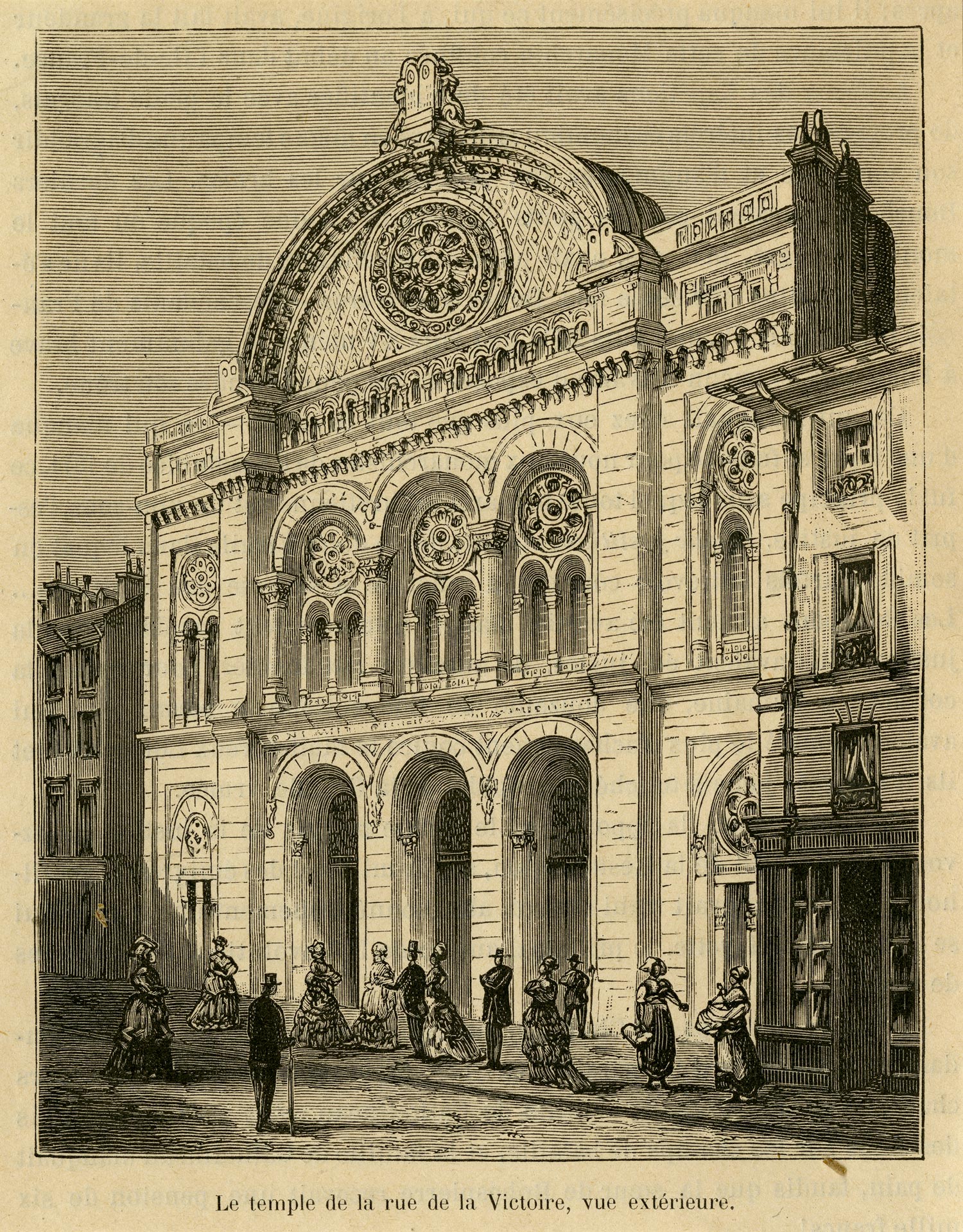The Grand Synagogue of Paris, built between 1861 and 1874, is the seat of the Chief Rabbi and the consistoire of Paris. The story of its erection tells a great deal about the difficulties and disagreements surrounding the siting of synagogues in 19th-century Europe. In 1859, the consistoire petitioned the Prefect of Paris for help in building a new synagogue to alleviate overcrowding. In the end, two large synagogues were built: this synagogue on rue de la Victoire, designed by Alfred-Philibert Aldrophe (1834–1895), and a second on rue des Tournelles (built between 1867 and 1876), designed by Marcellin-Emmanuel Varcollier (1829–1895) and Gustave Eiffel (1832-1923). The Jewish community requested that the entrance to the Grand Synagogue be located on rue Saint-Georges, a more prominent setting, but the request was denied. Instead, the impressive façade and entrance were located on the much narrower rue de la Victoire.
None of these problems are evident in this print, which presents the synagogue façade as monumental. Note that while men and women are shown together on the street, they used different entrances. Two doors to the sides of the main triple arched entryway lead to the women’s galleries. Though the purpose of the building is mostly ambiguous at first glance—it could easily be a theater—the Jewish identity is made clear by the tablets of the Ten Commandments atop the massive semi-circular pediment and a biblical inscription from Genesis 28:17 in Hebrew over the entrance: “This is none other than the House of God, the very gateway to Heaven.” The placement of such tablets on synagogues was customary by the late 19th century.
